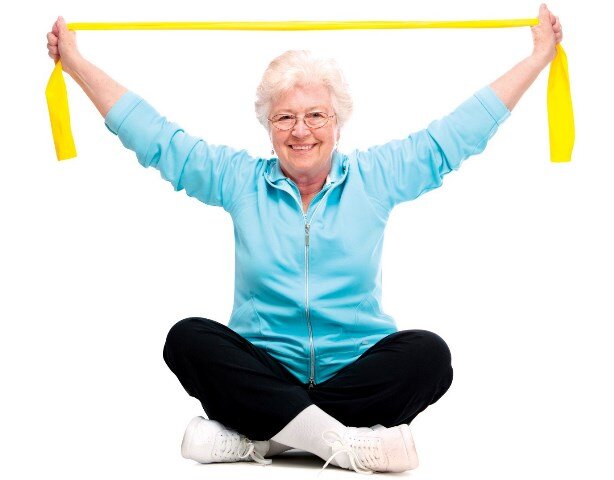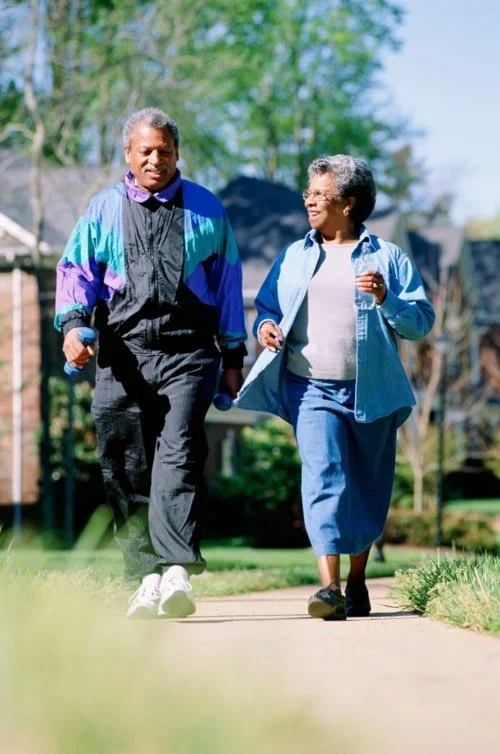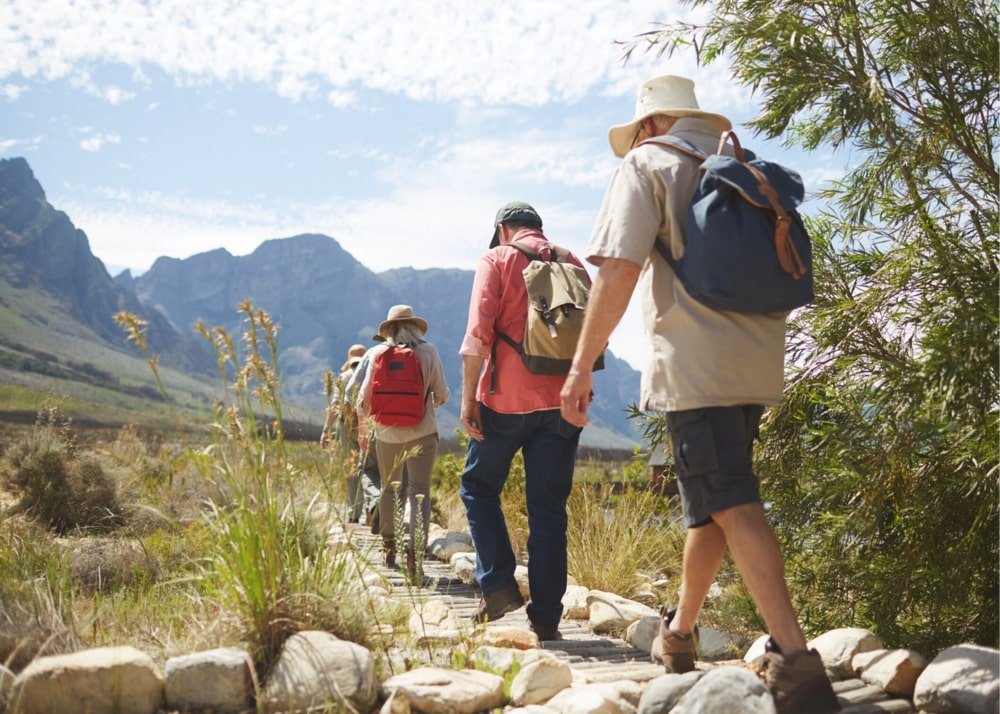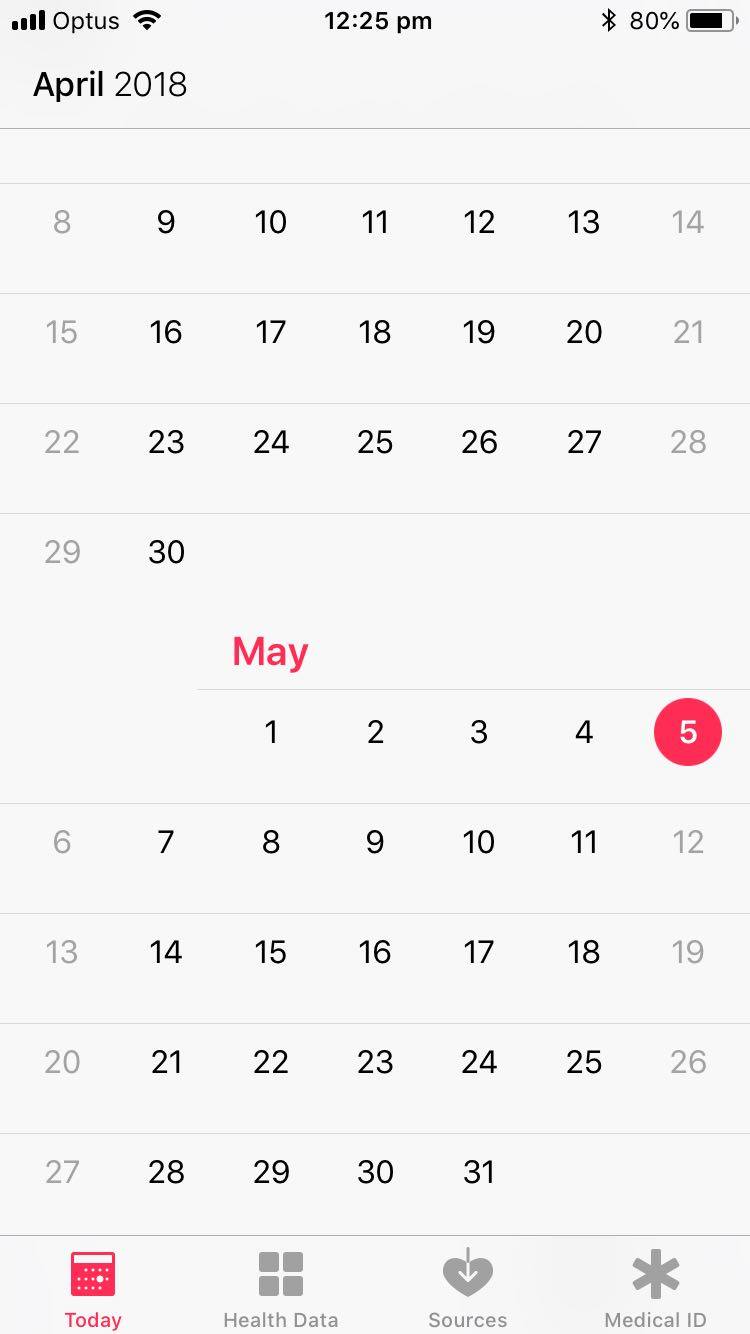
More Life Health blog. Discussing:
Seniors Exercise. Seniors Health. Seniors Fitness. Fall prevention for Seniors and more!
HOW TO WALK WITHOUT PAIN AND TO AVOID INJURY!
Whenever I meet a new patient for the first time who looks really healthy, moves well and has a sharp mind and is in their nineties or over a hundred, I always ask..
“What are your secrets to good health
And one of the common answers I get is variations of “I walked a lot”
With walking comes many benefits…
Whenever I have a new patient who is thriving in their nineties (or over a hundred), I always ask: "What is your secret to good health?"
I commonly get variations of: "I walk a lot. Always have!"
I believe walking to be one of the best types of exercise for people, especially seniors, to do to improve health and fitness.
Actually, I could go even further and say it IS the best type of exercise for seniors to improve health and fitness.
Why do I say this?
Because it is a type of exercise that almost everyone can do and comes with many health benefits. Not to mention little-to-no strain on our body!
Whether it's taking a longer walking route to the grocery store, walking (rather than driving) to visit a nearby friend, taking the stairs versus the elevator, or going on regular walks around your town (or in nature).
Whichever way you choose to get more walking into your life, one thing is for sure - more walking will bring many, many health benefits and could be the key to excellent health and fitness later in life.
This somewhat simple and straightforward activity can have a significant impact on your overall health - both physical and mental. I know whenever I am feeling overwhelmed, walking can do wonders for clearing my head and helping me to reset.
In this article, we will cover all you need to be a good walker. We'll cover the benefits of walking, how to make walking easier, how many steps you should be taking each day for good health and fitness (and how to track them). I'll also give a sample program, which if you are new to walking can help you get to 10,000 steps per day, without any hassles.
And, finally, I'll go through tips on how to get more walking into your life if you have knee pain.
Article Contents:
Is Walking Good For Seniors?
When it comes to exercise, especially when it’s all new, it can be met with some trepidation.
Am I going to be doing my body damage? Will walking wear out my joints? Will it make my arthritis worse? Will it cause me pain? Isn’t it better to rest?
These are some of the common thoughts that may arise for some people when thinking about walking more.
Yes! There are times that walking may aggravate symptoms. For example, knee pain (whether arthritis related or not). Or, weakness in other areas of the body, causing pain.
And there are times when you do need to rest!
However, you are born to move! The more movement you do, the better!
And walking IS GREAT EXERCISE FOR SENIORS!
Not doing exercise in some way is never the answer, even with arthritis.
There are ways to make walking comfortable and to decrease or prevent pain when doing it. At the end of this article, I will cover tips for walking for those who get knee pain.
Top 7 Benefits of Walking For Seniors
Walking is a great way to improve strength, endurance, mobility/flexibility and leads to many other health benefits.
Let’s now look at the benefits of walking:
Helps Build A Stronger, Fitter Body in a Safe Way
Gradually adding more walking into your day and making a conscious effort to spend less time sitting, is an effective way to get exercising more, each day, for the long run.
Although you also want to be doing specific exercises weekly to ensure you cover all components of fitness, walking alone will help you build a body of strong foundations and get you fit.
When you stay consistent, you will get a more conditioned body, able to withstand the stresses of daily life.
Yes, you may not get as fit or as strong in a short amount of time as someone who goes all out in the gym or begins running. But these types of higher-intensity exercises should only be done on a body able to withstand this.
High-intensity exercise on a weak body, not conditioned for this exercise, can lead to many problems. This is how your body can start breaking down, and pain and injuries occur.
Walking is a great way to get you stronger and build health and fitness while causing less harm.
If you do decide to do more strenuous/higher-intensity exercise or activity after some time of walking, you'll be more equipped to deal with it.
Weight Loss/Weight Maintenance
If you’re looking to maintain your weight or perhaps even lose some weight, then why not add daily walks into your schedule.
Contrary to popular belief, walking can be just as effective as running when it comes to burning those calories. Depending on your weight and walking speed, you can easily burn around 100 calories for every kilometre you pass.
Walking is one of the best ways to keep your weight in check, and it’s safer and less stressful on the joints than running and other forms of exercise.
Strengthens Bones, Improves mobility and Decreases pain
Walking for 30 minutes every day can reduce the risk of hip fractures. Studies have shown that regular walking can prevent loss of bone mass and reduce pain, which is important for those suffering from arthritis and osteoporosis.
Walking can also be beneficial for strengthening muscles, increasing mobility in the process and alleviating pain and pressure on the joints.
Walking is also another great way to improve overall flexibility and stability.
Improves Cardiovascular Health and Muscular Endurance
Older adults are at a higher risk of experiencing health issues relating to high blood pressure, high levels of cholesterol and heart disease in general.
Numerous studies have linked walking to improved cardiovascular health.
A 30-minute walk each day can improve circulation and lower blood sugar levels, leading to lower risks of diabetes, strokes and cardiac arrest.
Boosts Immune System
Want to help avoid the sniffles, sore throats and even the flu?
Put on some good shoes and let’s get walking!
Certain studies suggest that low and moderate exercise, including walking, can help fight off the flu, can help fight off infections and boost your immune system. [1, 2]
Promotes Better Mental Health and Cognition
Regular long walks can do wonders for mental wellbeing! They can help relieve symptoms of stress, anxiety and even depression.
Cardiovascular exercises such as walking are known to release endorphins - the feel-good chemicals in your body, helping you to feel good!
Staying active can also improve attention, memory, processing speed and cognitive function and can also reduce the risk of cognitive decline and dementia.
Another amazing thing about walking is that it works as a group activity as well! This is a great way to socialise, spend time with friends and family or even meet some new people. Why not search for a walking group you can join in your local area!
Improves Quality Of Sleep
If you have insomnia or lack of sleep, in general, you could find that walking more helps you get better quality and quantity of sleep.
Not only will walking exert your strength and tire out your body, but breathing in the fresh air can also help clear your head and put you straight into that sleep mode.
For more sleep tips, click here.
Top 5 Walking Tips For Seniors
Sometimes just putting your shoes on and taking off on a walk isn’t the best strategy when you decide to get walking more. Especially when it’s something you haven’t done in a long time.
Follow these tips below to help prevent any pain or injuries, to get the most out of your walking and help you keep it up for life!
EASE INTO IT
Although walking is considered low-impact exercise, I don’t recommend you just dive straight into it and go for gold.
If it has been a while since you’ve gone for a walk, don’t do too much too soon, and don’t do what you used to do.
It doesn’t matter if an activity is high or low in intensity, what matters is to ease your way into it.
If it has been some time since you’ve last walked, do half the distance you used to do and gradually build back to where you once were.
Give your body adequate rest, build up the distance and intensity (plus the number of walks) you do each week, over time.
Another aspect to keep in mind is preparation. The best way to avoid injuries and make the most out of your walking routines is to properly warm-up (click for a warm-up videos). Especially in colder weather and when doing brisk walks.
Yes even with walking, doing a light warm-up is a good idea. This will help loosen up your muscles and joints and get you ready for the exercise.
MAKE IT A GROUP ACTIVITY
Unlike most exercises, walking can be more fun when done with a friend or friends!
If you’re someone who enjoys the company of others or likes to make their workouts more engaging, then it might be a good idea to find a walking partner(s) or even join a walking group in your local area.
EQUIP YOURSELF
One of the best parts about walking is that it’s free of charge! There’s no monthly fees, pricey memberships or expensive gear - it’s just you and the world around you.
Of course, to make this experience safer and more pleasant, you do want to invest in a nice pair of comfortable walking shoes. Walking shoes are designed to offer good support and traction, as well as ultimate comfort for those lengthy strolls.
While it’s always a good idea to wear some breathable, moisture-wicking garments, wear whatever feels most comfortable for you.
Step tracking devices may be something that interests you if you want to get more serious with your walking. I cover step tracking devices below.
And, make sure you always have a bottle of water at your fingertips if going on long walks! Keeping hydrated is essential while staying active, so make sure to have some water handy at all times.
CHOOSE YOUR ENVIRONMENT
Thinking about where you walk (the terrains) can bring many individual benefits, helping you to get the most out of your walking, but it’s a good idea to be wary of the risks each pose.
Harder surfaces like sidewalks and roads can put a heavy strain on your knees and joints, but the even ground poses less of a falls risk.
Earth, beach or grass surfaces are generally softer and more comfortable on the joints than harder surfaces, however, ensure to keep an eye out for holes or any potential trip hazards.
You can also find out whether the city you live in has specialised tracks for walkers and runners. These tracks are made from rubber-like material and are much softer and springier than their concrete counterparts.
Natural walking trails can help improve your stability, strength and balance more than a flat surface due to the different movements required with the changes in terrain. Again, however, these surfaces pose a greater risk of falling than an even, flat surface. So ensure you're alert throughout your walk.
Adding in hills and stairs during your walks can help further increase your strength and fitness.
LISTEN TO YOUR BODY
Finally, listen to what your body is telling you. Your capabilities can change daily.
If your muscles are too sore or you’re feeling off, it may be time to have a rest, rather than push through it.
The best way to exercise safely is to consult with your Doctor or Physiotherapist before venturing into any new activity.
You can always shoot me a message if you have any questions or concerns about your routine! Alternatively, join the Facebook Support Community.
Walking is a great way to improve your health and fitness, and it is something that can be thoroughly enjoyable.
How Many Steps Should Seniors Take Each Day?
So we’ve established walking is good for health, but you’re probably thinking how many steps should you be getting to get in your daily activity requirements to help improve health and fitness.
Public health guidelines recommend 150 minutes of moderate-intensity physical activity each week to improve fitness (both cardiorespiratory and muscular) and for bone health, functional health, mental health and to decrease the risk of certain diseases.
But how many steps does this equate to each day? One study has done the fantastic work of working this all out for us.
This study rightly noted that steps walked must be taken over and above activities of daily living and must be done at least of moderate intensity. (For an easy way to track intensity. An RPE (Rating Of Perceived Exertion) Scale can be used- click to access).
Moderate intensity walking would be 11-14 on the RPE scale, meaning taking the steps at a pace that feels “Light” to “Somewhat Hard”.
Vigorous-intensity walking would be 15 - 16 or “Hard”.
This study concluded that taking 7,000-10,000 steps/day of at least moderate intensity and including activities of daily life, would provide the equivalent exercise to that recommended by the public health guidelines.
Another study concluded that more walking was associated with decreased risk of functional decline over two years in older adults. This study also recommended that greater than 6,000 steps/day gives a basic estimate of the amount of walking required to protect against functional decline in people with, or at risk of, knee osteoarthritis.
Tools To Track Your Walking
Tracking your steps is a great way to keep you motivated, and there are some simple and cost-effective ways you can track your steps taken.
Smartphone Tracking
Almost all of us have smartphones, which have built-in health applications (or that can be downloaded). These apps can track your steps.
Here is how to track your steps using your smartphone.
The Apple iPhone
The Apple iPhone (the most commonly used phone, and the phone I use) has one built-in. Here is how you access it:
1. Turn your phone on and look for an application called “health” - Usually anywhere on the first page.
2. Open the app and click on the date you want.
3. See the steps you’ve completed for that day. (Here you can also see any mindful minutes if you have relaxation apps connected).
Note - Steps taken will start collecting automatically in the background. You do not have to activate anything.
1. Find the “Health” App
2. Click on your date you walked.
3. View your steps taken.
Android Devices
Samsung or other smartphones, using android software, have similar capabilities also.
To track your steps, download “Google Fit” from the Google Play store on your smartphone.
Activity Trackers
Another way to help track your steps are activity trackers (or fitness trackers) that can be worn on your wrist.
Activity trackers can monitor an array of activity measures including walking, swimming or running, sleep and heart rate.
A common type of activity tracker you may have heard of is the “Fitbit”.
If you’re wanting to take your fitness to the next level and are super keen on tracking your activity levels, an activity tracker may be for you!
Activity trackers range in price for very basic models and increase in price depending on brands and features.
A great starting activity tracker is the Fitbit Inspire. This tracker will track your all-day activity, including steps, distance, hourly activity, active minutes, calories burned and your sleep. This model is also affordable and lightweight. Keep in mind these trackers have very small font size, so may be difficult to read.
Pedometers
A pedometer is simple device to help track your steps.
Although some pedometers track calories burned and distance covered; usually they only track steps taken.
If you want to track your steps and you’re not after the bells and whistles of an activity tracker and don't use a smartphone, a pedometer might be a cost-effective solution for you.
Remember, exercise should be fun! Getting moving more is what's most important, and tracking your steps may not be for you! So if you don't want to track your steps, you don't need to track your steps - just get walking, and enjoy it!
Here is a pedometer I recommend (click link) and is one of the most accurate pedometers.
COUCH POTATO TO 10,000 STEPS: A Sample Walking Program For Seniors
I’m sure you may have heard the goal of getting to 10,000 steps a day!
What about you? Would you love to be able to walk 10,000 steps yourself?
Do you think it is out of reach?
Well.... It doesn’t have to be!
Although it is not necessary to be getting in this many steps each day to improve your health and fitness, if this is a goal you would love to achieve, I say go for it!
With the right walking plan, you too can be walking 10,000 steps a day!
And.. I want to help you get there safely!
If you are new to walking or haven’t walked in some time one of the biggest mistakes you can make, and one commonly made, is doing too much too soon.
To achieve a goal like this, the key is to build it up over time.
Build your foundation, allow your body to adapt to the new stresses placed upon it, let your body to get stronger and fitter over time. Don’t do too much, too soon.
Attempting to do too much too soon could lead to pain, injury and frustration. Take your time. Do it properly. Give your body the rest and recovery it needs. There is no rush.
This goes for everyone. Put your ego aside; don’t rush it - build your foundation!
Now, here is a sample walking program:
[Note - I have made this program starting for a person who currently gets minimal amounts of walking in each day (hence the couch part) - If your fitness is beyond this, go straight to the 5,000-10,000 program below]
couch-5,000 Steps Per day
Week 1:
Monday, Wednesday, Friday - Walk 1000 steps on each of these days.
Week 2:
Monday, Wednesday, Friday - Walk 2000 steps on each of these days.
Week 3:
Monday, Wednesday, Friday - Walk 3000 steps on each of these days.
Week 4:
Monday, Wednesday, Friday - Walk 4000 steps on each of these days.
Week 5:
Monday, Wednesday, Friday - Walk 5000 steps on each of these days.
Week 6:
Monday, Wednesday, Friday - Walk 5000 steps on each of these days.
Tuesday, Thursday - Walk 2500 steps on each of these days.
Week 7:
Monday, Tuesday, Wednesday, Thursday, Friday - Walk 5000 steps on each of these days.
Tuesday, Thursday, Saturday - Walk 2500 steps on each of these days.
Week 8:
Monday, Wednesday, Friday - Walk 5000 steps on each of these days.
Tuesday, Thursday, Saturday - Walk 5000 steps on each of these days.
Sunday - Is Fun Day (Rest and forget about getting your steps in).
Do this walking plan as set out. The first couple of weeks may seem too easy, but it gradually gets more challenging, and you will feel it as the weeks progress.
Remember to always listen to your body and never push into pain. If you find the plan above is too challenging and ramping up too fast, do it over three or four months (rather than two).
Breaking up the steps throughout your day (e.g. in 10-minute bouts) will make it all more manageable.
If you are still getting pain with your walking even by following a walking program like the above, it's best to see a Physiotherapist in person to get an individualised program to help work through your pain issues.
Now you've comfortably reached 5,000 steps per day, and only when you can comfortably do 5,000 steps per day, it's time you can set your sights on the 10,000 steps/day goal.
5,000 - 10,000 Steps Per day
Week 1:
Monday, Wednesday, Friday - Walk 5000 steps on each of these days.
Tuesday, Thursday, Saturday- Walk 2500 steps on each of these days.
Sunday - Is still Fun Day (Rest and forget about getting your steps in for the rest of this program)
Week 2:
Monday, Wednesday, Friday - Walk 6000 steps on each of these days.
Tuesday, Thursday, Saturday - Walk 3000 steps on each of these days.
Week 3:
Monday, Wednesday, Friday - Walk 7000 steps on each of these days.
Tuesday, Thursday, Saturday - Walk 3500 steps on each of these days.
Week 4:
Monday, Wednesday, Friday - Walk 8000 steps on each of these days.
Tuesday, Thursday, Saturday - Walk 4000 steps on each of these days.
Week 5:
Monday, Wednesday, Friday - Walk 9000 steps on each of these days.
Tuesday, Thursday, Saturday - Walk 4500 steps on each of these days.
Week 6:
Monday, Wednesday, Friday - Walk 10000 steps on each of these days.
Tuesday, Thursday, Saturday - Walk 5000 steps on each of these days.
Week 7:
Monday, Wednesday, Friday - Walk 10000 steps on each of these days.
Tuesday, Thursday, Saturday - Walk 7500 steps on each of these days.
Week 8:
Monday, Wednesday, Friday - Walk 10000 steps on each of these days.
Tuesday, Thursday, Saturday - Walk 10000 steps on each of these days.
There are many ways to build up your walking volume to 10,000 steps over time, ensuring you allow your body to adapt to the activity. This sample program is just one of many ways you can do this.
As mentioned above, keep listening to your body and never push into pain. If you find the plan above is too challenging and ramping up too fast, take your time and do it over twelve or sixteen weeks rather than eight weeks.
Keep it up, stay consistent, and before you know it, you'll have hit your 10,000 steps goal!
10 TIPS FOR WALKING WITH ARTHRITIC/PAINFUL KNEES
For some of you, knee pain can make it challenging to get in your walking; and avoiding walking or exercise (in chronic pain conditions), is not the answer! It's about finding what works for you, to help keep you mobile and those legs strong.
Here are ten tips that can help ease the pain and allow more walking.
1. Wear The Right Footwear: Avoid toes with pointed ends, high heels, heavy shoes, or shoes with worn soles. Get a comfortable pair of walking shoes with good shock absorption to help decrease impact and pain through your knees.
2. Warm-Up: Start at a slow pace to allow your muscles to wake up and to help lubricate your joints prior to the walking and build into a faster pace. Also completing one of the warm-up videos will help get you ready for movement.
3. Build Up Your Walking Over Time: As with any exercise, if you are new to walking, or it has been some time since you have started walking, always, I'll repeat.... ALWAYS, ease your way into it. Start with less duration (or distance) at lower speed (e.g. ten minute blocks) and work your way up to longer duration and faster speeds. If you find yourself sore after a walk, a rest day in between may be required. Start small, and gradually progress, even if it seems too small. You want to be avoiding pain. Do not work into pain.
Choose the softer surface.
4. Choose Softer Surfaces: When walking on concrete surfaces, more shock goes through the knees. Jogging and running on concrete surfaces increases these impact forces.
Walking on softer surfaces such as sand, grass and dirt place less strain on your joints. Softer athletic tracks even more so.
5. Start By Walking In a Pool: If you find you have pain walking on the ground, a simple way to build your muscle strength while taking the pain out of walking by reducing weight is to start walking in water.
The deeper the water (while still able to stand) the less strain on the knees (and other joints).
Once you have spent some weeks walking in a pool, your legs will be better suited to handle land-based walking.
6. Walk When Your Pain is Lowest: If you get pain in the morning, or at night, for example, avoid these times and walk during the times of day where your pain levels are decreased.
7. Lose Excess Weight: Carrying extra weight puts extra stress and strain on your knees. Even just losing a few kilos, if overweight, can help reduce pain symptoms. Remember, 90% of weight loss is diet, so to lose weight faster, make sure you’re eating the right amount and types of food.
8. Build Your Leg Strength - Performing knee strengthening exercises to help strengthen your knees or adding in cycling or stationary bike work can help improve leg strength. When the muscles surrounding your knee joints are strong, the strain on your joints will be reduced.
9. Walking Aid/Poles May Help: Depending on your condition, a walking stick, or a wheeled walking aid may help reduce the strain on your knees. These devices will help decrease fatigue and also help with stability. Trekking poles may also help when going on longer walks.
10. Movement is Medicine: Get stronger, get more flexible, build your fitness. Stop sitting so much. Aim to get more movement and exercises in your life each day.
Walking is a great way to improve your health and fitness and something that can be thoroughly enjoyable.
Get more walking in your life and start improving your health today!
Hi, I’m Mike!
A Seniors' Specialist Physiotherapist and Exercise Scientist.
I have spent many years working with people over 60, in Australia and now all over the world, to help them improve their health and fitness.
If you're over 60, I have designed this website to give YOU everything you need for you to move better, get stronger, become fitter, get healthier and look and feel better!
Need more support on your health and fitness journey? Click here to join the Facebook Support Community (it's free)!













